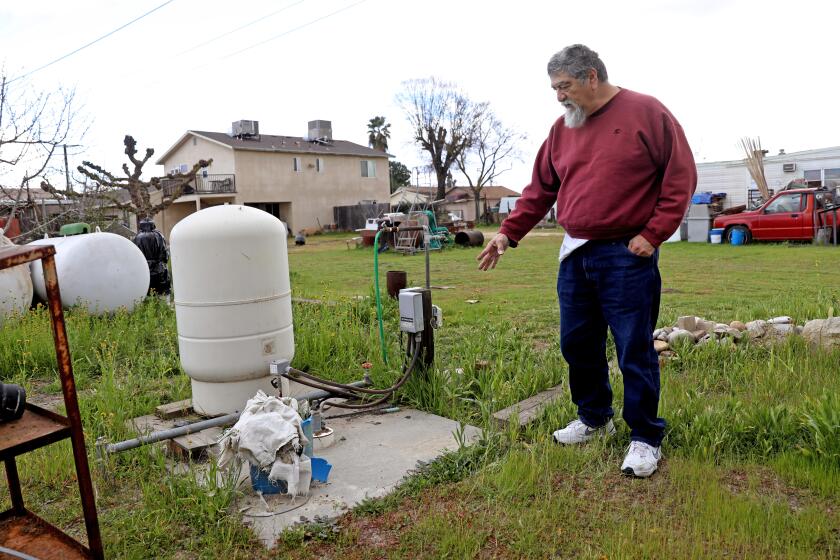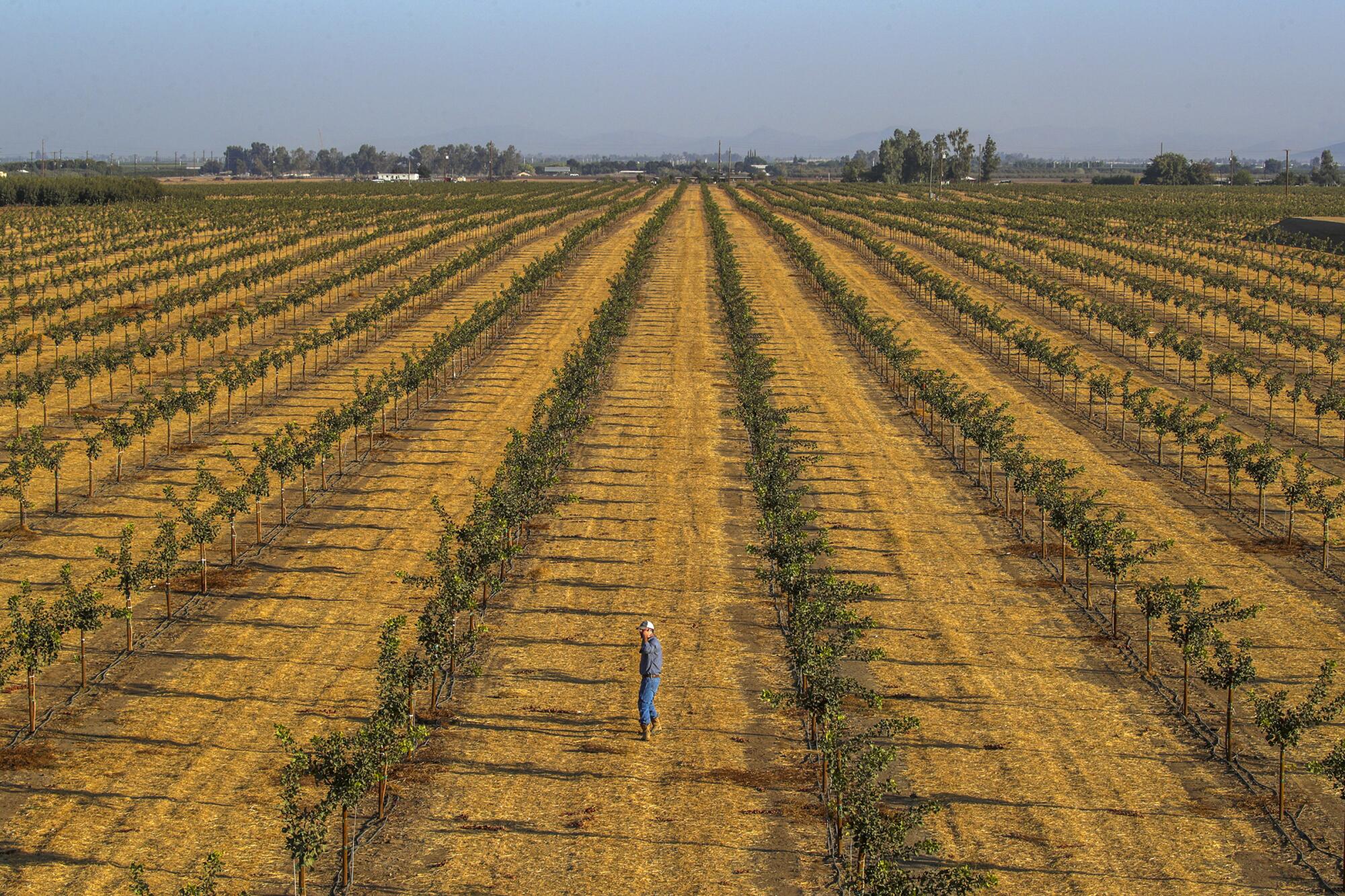
- Share via
California’s extraordinarily wet year brought the state vast quantities of water that have soaked into the ground and given a substantial boost to the state’s groundwater supplies, but not nearly enough to reverse long-term losses from over-pumping in many areas, according to a new state report.
Officials with the Department of Water Resources examined water-level measurements in thousands of wells statewide and found that from spring 2022 to spring 2023, water levels rose significantly in 34% of wells and declined in 9%. Others saw little change.
The rise in aquifer levels in many areas represents an improvement from the rapid and widespread declines that occurred during the last three years of extreme drought. Still, state officials cautioned that California’s groundwater remains depleted by decades of overuse.
“This year, groundwater levels began to recover from the prior drought years, but only partially,” officials wrote in the semiannual report. “Above average precipitation across the state alone can’t undo the damage from years of drought. Groundwater levels, while recovering, are still lower than the period after the 2012-2016 drought.”
The report’s authors said it will still require “several more wet years, in addition to more focused efforts to increase recharge and reduce pumping, to recover from the most recent drought and the cumulative depletion of groundwater aquifers that occurred over the years.”
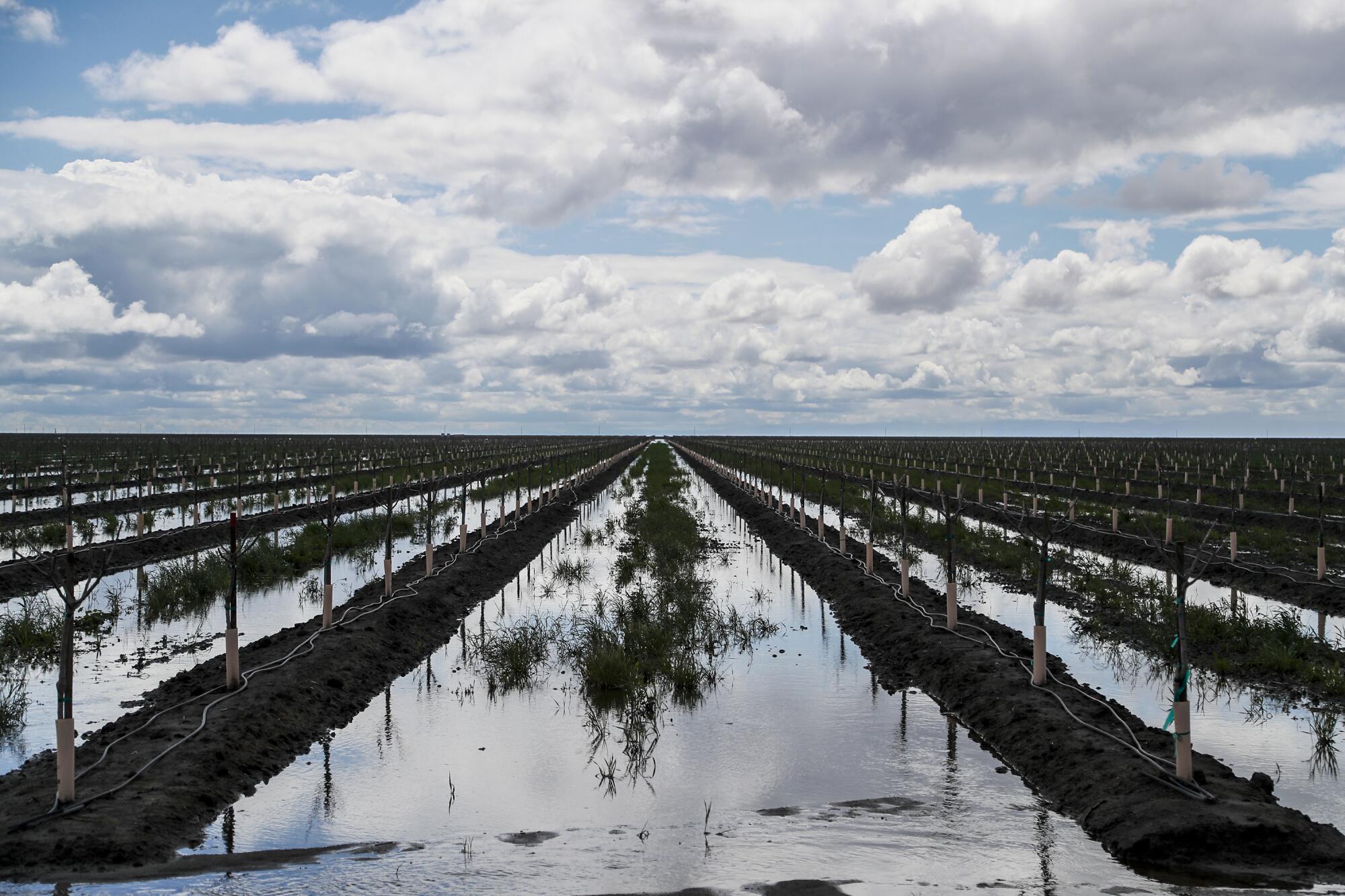
The report includes data through August, and water managers said it will take more time to see the full effects of water that percolates through soil and sediment to aquifers.
“Water moves very slowly within groundwater basins, and that infiltration of surface water into the groundwater system, it does take time,” said Steven Springhorn, a supervising engineering geologist who worked on the department’s report.
Aggressive and impactful reporting on climate change, the environment, health and science.
The data show more recovery has occurred in shallow layers of aquifers. In areas where much of the pumping draws on deeper aquifers, which are often tapped by agricultural wells, there has been less of a rise, Springhorn said.
The groundwater measurements also show how conditions vary widely from one part of the state to another. Some of the largest declines in recent years have been driven by heavy agricultural pumping in the San Joaquin Valley, which has left many residents with dry wells.
The state report said that some of the largest recent extractions of groundwater have occurred in the Tulare Lake hydrologic region, in Kings and Kern counties, and that water levels declined more than 5 feet in nearly a third of the area’s monitoring wells this year, a larger proportion than in any other hydrologic region. Since 2018, more than 70% of the wells in the region have declined significantly.
In contrast, more than 50% of monitoring wells increased during the same five-year period in the heavily urban South Coast region.
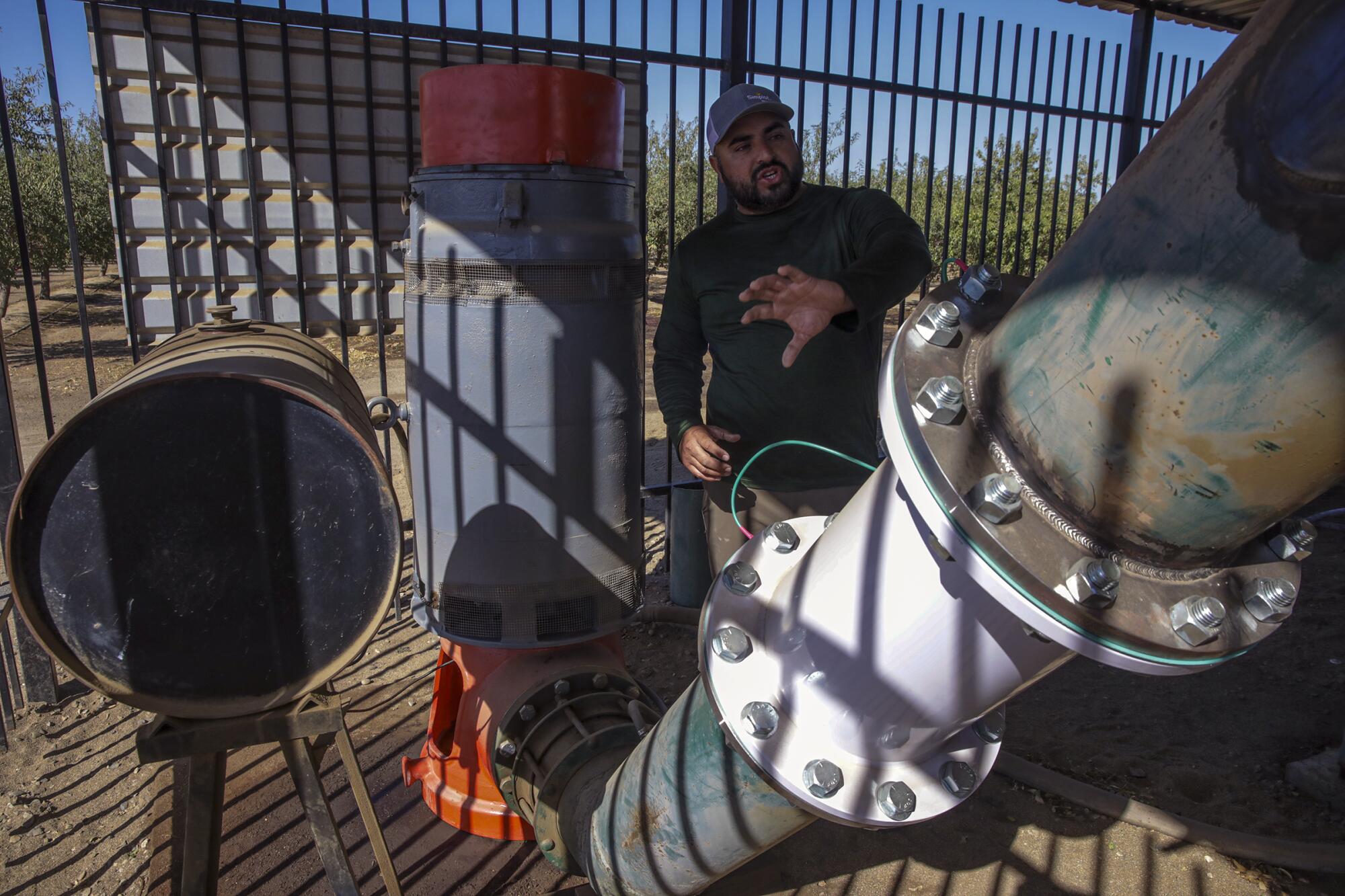
In farming areas of the Central Valley, water levels have been helped in some areas by a combination of natural recharge and state-supported recharge efforts. With more water available from canals, growers and agricultural districts have also been able to reduce groundwater pumping, which has helped to lessen the pressures in some areas.
Over decades, heavy pumping has drained aquifers to a point that clay layers collapse, causing portions of the valley floor to sink, and permanently reducing aquifer storage capacity. In some areas, the ground has sunk more than 30 feet. The phenomenon of land subsidence has caused damage to canals, roads and other infrastructure.
Excessive groundwater pumping has long been depleting aquifers in California’s Central Valley. Now, scientists say the depletion is accelerating.
State officials said the abundance of water during the recently ended water year — which runs from Oct. 1 to Sept. 30 — has slowed the rate of subsidence for now. And in one part of the western San Joaquin Valley where water levels rose significantly, the ground surface also rose slightly.
In this farming area, along the 5 Freeway in the Westlands Water District, rising water levels have caused this small “rebound,” Springhorn said. According to state data, he said, the ground level rose nearly an inch within a year after sinking about 3 inches over the last decade — an uplift that scientists describe as a recoverable “elastic” deformation of the land surface.
The long-term trend in the San Joaquin Valley, however, has been continuing subsidence across large stretches of farming areas.

State water regulators have told six local agencies in the San Joaquin Valley that their groundwater plans are inadequate, a step that clears the way for potential state intervention to force stronger measures to curb over-pumping.
The State Water Resources Control Board announced this week that the agency’s staff has recommended placing the Tulare Lake basin on probationary status, because the area’s local plan doesn’t include adequate measures to stop declines in water levels, degradation of water quality and rapid land subsidence.
Tulare Lake was drained generations ago and transformed into cotton and tomato fields, but this year, the lake reappeared on thousands of acres of farmland.
Land barons seized control of the Tulare Lake Basin generations ago. This year’s destructive flooding left troubling questions about the power they wield.
State officials pointed out that parts of Tulare Lake have sunk up to 6 feet since 2015, which has sent floodwaters into areas that emerged unscathed in previous floods. To deal with the subsidence and reduce risks, local flood control districts have had to raise the levees that protect the city of Corcoran.
“We recognize that we should start where problems are most urgent and solutions appear to be further away,” said Natalie Stork, supervising engineering geologist for the State Water Board. “We are very concerned about potential impacts … that could occur due to continued lowering of water levels, subsidence, water quality degradation.”
The water board’s staff analyzed local agencies’ groundwater plan and found it would allow declines in water levels that could leave 700 household wells dry.
Stork said the reappearance of Tulare Lake doesn’t fix groundwater issues in the area.
“The lake bed contains clays that prevent water from moving into aquifers below the ground, and the water quality is not ideal for uses like drinking water,” Stork said.
Researchers examined plans for managing groundwater in the Central Valley. They found local plans leave thousands of wells at risk of running dry.
The board scheduled an April 16 hearing to consider whether to place the basin and its five local groundwater management agencies on probationary status. If the board decides to put the area on probation, most well owners would be required to start reporting their water usage and start paying pumping fees, among other requirements.
The action is the state’s latest step in implementing the 2014 Sustainable Groundwater Management Act, which requires local agencies to develop plans and curb over-pumping by 2040 in many areas.
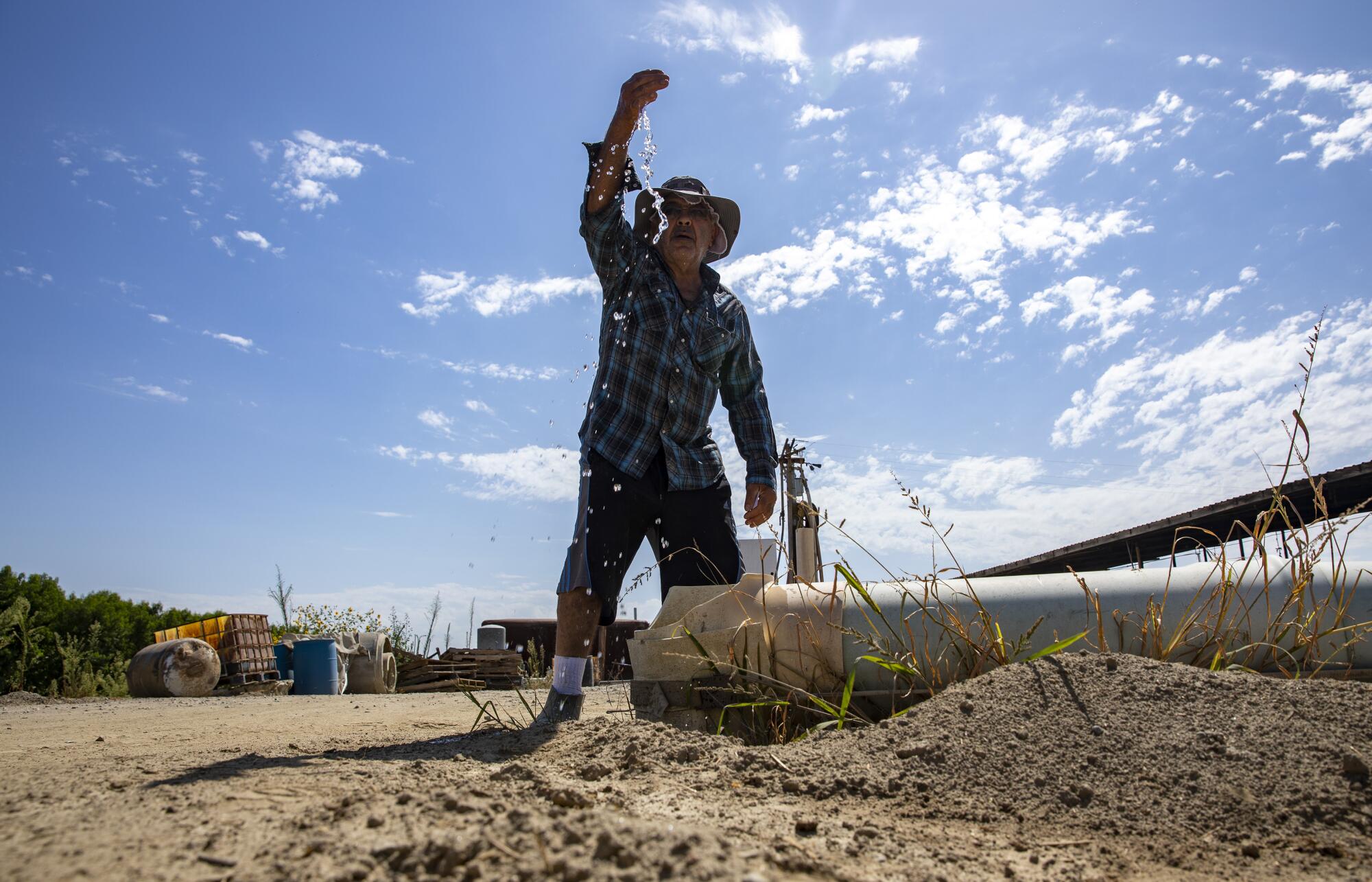
Farms in the Central Valley have long depended on groundwater to produce crops such as almonds and grapes.
Despite this year’s historic snowpack and record rainfall in parts of the state, California has received much less precipitation since 2000 than the 20th century average.
State water officials describe this as the “accumulated precipitation deficit,” reflecting repeated droughts alongside the effects of climate change.
“As California transitions to a warmer and drier climate, this scenario of persistent groundwater depletion becomes increasingly likely, further emphasizing the importance of sustainable groundwater management,” state officials wrote in the report.
In wet years, groundwater typically accounts for 30% to 40% of the state’s water use, but in dry years, that often grows to about 60% of water usage.
The increased pumping during droughts has led to especially large drawdowns. According to state data, about 1,500 dry household wells were reported during the severe drought last year.
This year, more than 400 dry wells have been reported, many of them in farming areas of the Central Valley.
The wet weather also affected the drilling of new wells. According to the report, fewer new wells were drilled in 2023 than in any year since 2014.
The latest data underline the importance of continued efforts to manage groundwater, Springhorn said.
“Sometimes it’s out of sight, out of mind,” Springhorn said, “but it’s so critical for the state’s overall water resiliency.”
Toward a more sustainable California
Get Boiling Point, our newsletter exploring climate change, energy and the environment, and become part of the conversation — and the solution.
You may occasionally receive promotional content from the Los Angeles Times.



